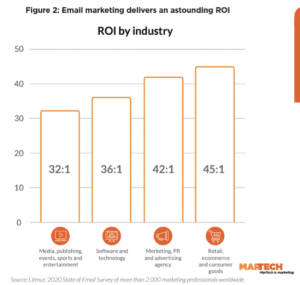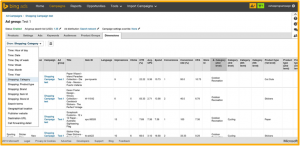You probably recognize by now that we’re big fans of Peter Drucker. We consider him the father of modern management. One of his quotes is particularly pertinent to this post on the subject of strategy and the future. Drucker said, “The best way to predict the future is to create it.”
How do you go about creating the future?
The process starts by defining what the future is, painting a picture of that future, and translating that into an actionable customer-centric strategy. An actionable strategy includes the jobs to be done that will be needed to achieve the vision. The choices, that is the strategy, have implications for investments in talent, organizational structure, systems, tools, processes, partners, suppliers, and more.
Of course, thinking about the future doesn’t eliminate the need to deliver results today. It’s a delicate balance. And one not easy to achieve because the demands of today are ceaseless. That’s why leaders need to deliberately carve out time to think about the future.
While there’s no hard and fast rule on how much a leader should spend thinking about the future, there are various articles that suggest at least 10 hours a week. That’s a day! A day to think about how to create and add customer value. A day to think about how to outsmart and outpace the competition.
How One Day A Week Now Creates the Strategy for Tomorrow
Imagine if you committed a day to thinking about, and creating the future. Strategy needs to be future-focused. What would you think about?
Here are five categories of questions that might provide a starting point for you and your team. It’s helpful to think about these in terms of things inside your control and those outside your control.
- What are we doing now that we should keep doing? Why? How can we do these better? How can these deliver more value? What investments would we need?
- What are we doing now that we should stop or change? Why? What are the implications to customers if we stop or change? How would this impact our organization?
- What are 3-5 trends impacting our current customers? How are these trends affecting them? What are the implications of these trends to our business? How can we use these to create new solutions that generate value for our customers and company?
- What are 3-5 trends impacting our industry? Why? What will this mean to our customers? How are our competitors addressing these? How can we use these trends to create a competitive advantage? How can we use them to create new solutions and more value for customers and the company? How do these trends present an opportunity for new markets and/or customers?
- What are 3-5 trends impacting the world? What are the short-term and long-term implications? What are the upsides and downsides to each of these trends? How will these trends impact our customers, our markets, our industry? How can we leverage these to create new solutions? Gain access to new customers and markets? Create more value for existing customers and the company?
Exploring the answers to these questions and others are instrumental to choosing a strategy, allocating the right resources, and driving the right activities that will make a difference and to identifying areas of opportunity and areas for improvement.
The first two categories of questions often fall within the organization’s control, while the questions in the last three categories are often outside of your control. And in some ways, that makes these questions even more important because these are the things that can cause the greatest upheaval and havoc. Regardless, the answers will lead to choices and your choices will have ripples throughout your organization. From the customers you serve, to the products you offer, to the investments you make in R&D, production and delivery, Marketing and Sales, and Customer Service.
Want to Create the Future? Use a Systematic Approach.
Given the rate of technological innovation, the rapid flow of capital into new businesses, and the power of the customer, exploring the answers to these questions is not a one and done. Gathering research developed and conducted through cross-functional teams, that culminates in quarterly or annual strategy meetings is no longer adequate. The current pace of business means these questions and others need to be attended to on a consistent, perhaps even weekly basis to rapidly derive valuable, actionable insights and tee up experiments to test potential strategies.
We believe it is important to have a systematic approach for exploring these questions, for identifying signals and relevant data that provide insight into the questions, and for evaluating your answers to ensure these external forces serve more as opportunities than challenges.
We recommend that this systematic approach include regular, weekly interactions with members of your ecosystem like supply chain, influencers, customers (form a customer advisory board), competitors (attend industry events). These interactions provide an opportunity to listen and tease out concerns and/or external challenges they are facing, their priorities, and where they are investing. Working groups, such as Tiger Teams or SWOT Teams, can be created and deployed around each of the question areas. It brings the rest of the team into the process and helps bring into focus what you don’t see yet.
Expect the competition to be engaging in a similar process with a focus on seizing growth opportunities. Therefore, speed is of the essence. You can lead the pack or choose to see how things play out and be a fast follower. Be prepared for either scenario.
Scenario planning is helpful in that it provides a process to explore a wide range of potential futures. The process of thinking about the future provides an anchor to scenario planning so you aren’t “boiling the ocean” while still taking disruptions into consideration and where and how you can create value. Scenarios help you gain insight into the gap between the current and future state, gaps in your customer set, your portfolio of solutions and services, your processes, etc.
The process of thinking about the future on a consistent and frequent basis facilitates defining THE future state you wish to create and then working backwards to identify critical innovation and operational milestones and their timing – all the way back to the current moment in time. You now have a blueprint for how to go from where you are to where you want to be.
This approach supports Stephen Covey’s Habit 2, Begin with the End in Mind. As he aptly said, “Your most important work is always ahead of you, never behind you.” Continuous strategic planning creates the opportunity to rapidly launch, test, refine, or kill strategic initiatives.
Will You Be Prepared When the Future Arrives?
Once you have a clear vision for the future and have identified the customers you will be serving and how success will be measured, the next step is to inspire the rest of your team to embrace the vision and prepare. Thinking about the future gives people something to aim for and facilitates alignment. For the future will arrive.
Business & Finance Articles on Business 2 Community
(58)
Report Post







